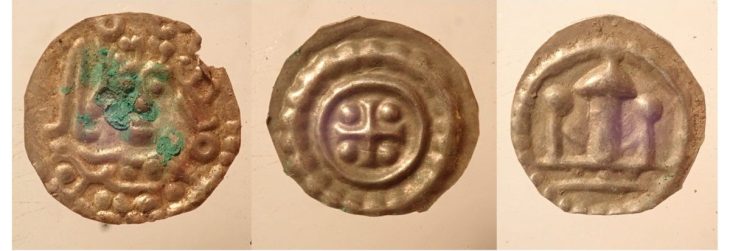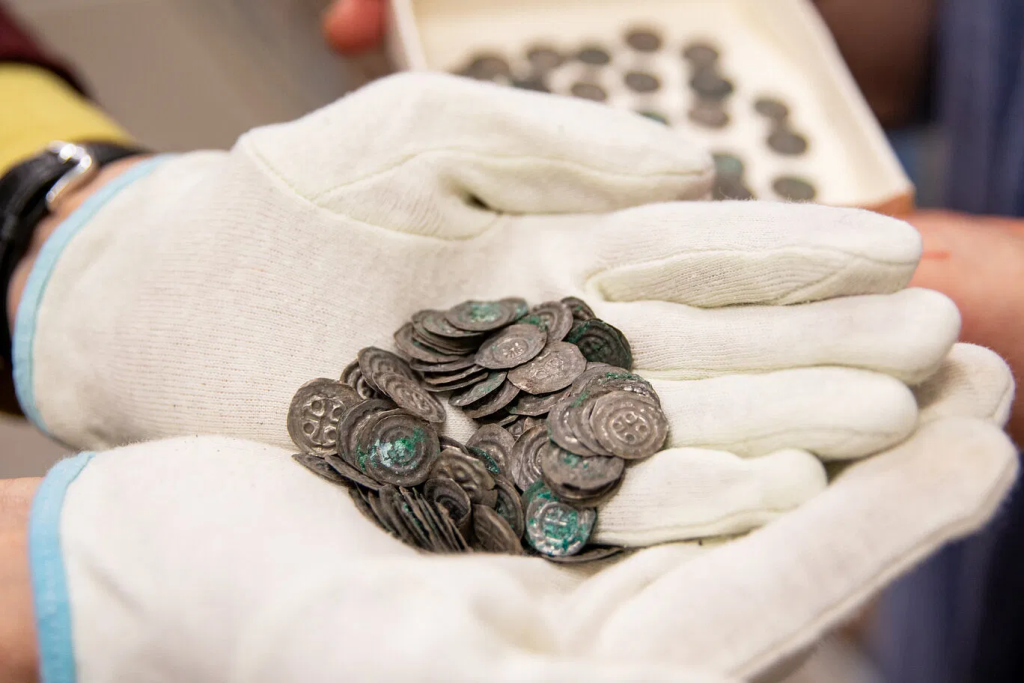A chance discovery during a geothermal installation project in Sweden has unearthed a treasure trove of silver coins and rewritten history. Archaeologists in Brahekyrkan, located on the island of Visingsö, stumbled upon a remarkable find – 170 silver coins dating back to the mid-12th century.
This unexpected windfall not only sheds light on the medieval history of the region but also challenges existing knowledge about burial customs and coin circulation in Götland during this period. The Jönköping County Museum, leading the excavation efforts, announced this groundbreaking discovery in a translated press release.
The trove of silver coins was found within the grave of a young man, estimated to be between 20 and 25 years old at the time of his death. These weren’t ordinary coins; they were bracteates – thin, coin-shaped pieces of metal used more as jewelry than currency. The individual bracteates were produced between 1150 and 1180, offering a glimpse into the artistic styles and economic practices of the era.
“It all began on the very first day,” explains Anna Ödéen, the project manager and archaeologist. “While clearing out skeletal remains to understand the layout of the graves, we stumbled upon three silver coins. Upon closer inspection, we realized many more lay nestled near the buried man’s left foot.”

The sheer quantity and exceptional condition of the coins make this discovery unique. Not only are there very few similar finds from this period, but some of the unearthed bracteates are entirely new to researchers, potentially rewriting our understanding of medieval minting practices.
The excavation also revealed 24 additional graves and 20 hearths, suggesting a significant level of activity at the site. Interestingly, a previous survey in 2005 identified hearths dating as far back as 50-400 AD, indicating a continuous presence here since the Roman Iron Age.
An even more intriguing aspect of the find is the location of 20 graves outside the church wall, on unconsecrated ground. Traditionally, such areas were reserved for those deemed unfit for a “proper” Christian burial – suicides, unbaptized children, and serious criminals. However, the sheer number of graves, their organized layout, and the presence of the young man with the silver coins challenge these notions.
“It seems this practice of burying outside the churchyard walls was more widespread than previously thought,” comments Anna Ödéen. “These graves were clearly marked and well-maintained, suggesting a level of respect for the deceased.”
The discovery of such a large number of valuable coins in a single grave is another puzzle for archaeologists. While the exact purpose remains unclear, it has sparked considerable debate and investigation. Experts at the Jönköping County Museum are meticulously analyzing the coins, hoping to glean further insights into this enigmatic practice.
The significance of this find extends far beyond the number of coins unearthed. As Eeva Jonsson from the Royal Coin Cabinet states, “This is a truly sensational discovery that will reshape our understanding of early medieval coin history in Götaland and illuminate a period shrouded in mystery.”
The ongoing research and analysis of the silver coins from Brahekyrkan promise to rewrite our understanding of medieval Swedish society, burial customs, and economic practices. This unexpected windfall serves as a powerful reminder that historical treasures often lie hidden beneath our feet, waiting to be unearthed and reinterpreted.
